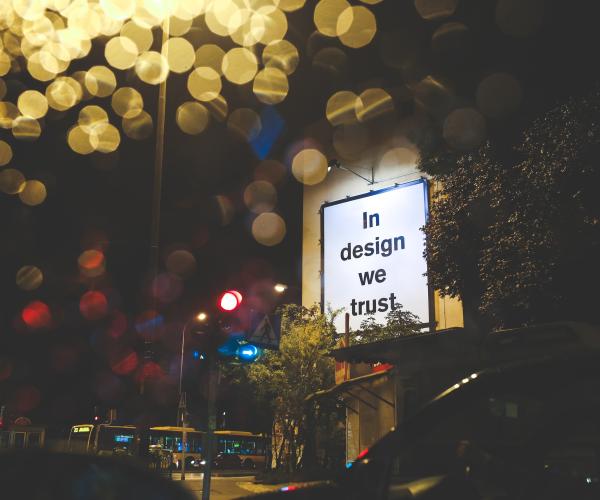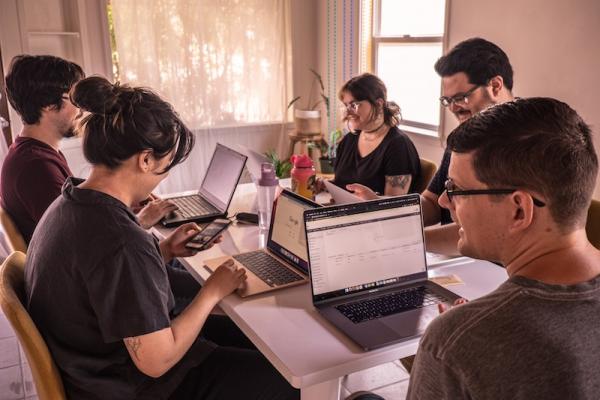Design Etiquette

As children, we are taught to use "please" and "thank you" as well as other phrases that demonstrate proper etiquette. As adults, we have internalized these basic rules but we sometimes don't consider how etiquette may also play a part in our everyday work interactions. The truth is, workplace etiquette is just as important as everyday etiquette.
What is Design Etiquette?
Design etiquette is about following certain procedures throughout the company in regards to creative work. These procedures may be unique to your company, but everyone in your company should know and follow these rules. It is considered a courtesy to leave your work in a manner that is consistent enough so others who may need to pick up the project later can get right to work. While a brief review might be needed it is better than having to translate your personal style as though it were a foreign language.
Working With Fellow Designers
Design, as a whole, is a collaborative effort. It is something that is constantly being developed by any and every designer. Though the methods for design might differ from each individual the overall progress is always pushing forward. However that progress might come in large strides or small ones depending on how well everyone works together.
Each person on a design team must have a similar understanding of design and good practices. This knowledge set is just as important as everyone on the team being able to understand each other. While the overall skills of one individual may dwarf another, the core set these skills must be in the same realm for everyone. This helps with the passing and transition of work from one designer to another.
General Practices For Working on Projects
The following are some ideas for what can be considered as a proper etiquette for design. While this list is limited, the full amount of good practices is not.
- Keep layers organized and properly named. Knowing every object within an immensely multilayered project can take a lot of time to get familiar with if you are not the original creator. A proper naming scheme and segmentation of layers can help with that learning time. A name for a layer could be as simple as the name of shape, what it is doing, and/or color, while smaller items of an object could be grouped and named to help with segmenting layers.
- Share ideas and tips. Being willing to exchange ideas and tips to help expand each other’s ability toolkit. Adapting one form of design to another is very common and can lead to innovative design directions. While designing for print and web design can be very different, it is common to bring in ideas from print to web design. Swapping notes with one another can also lead to new ideas.
- Never plagiarize! It is not okay to copy someone else’s work and pass it off as your own. In graphic design, outside work can be used as a template to help jump off your creativeness. Tweaking the original element to the point where it has become your own is completely okay and can make for interesting designs. Graphic design as a whole is a collaborative effort and blatantly copying someone else’s work will not help progress the field, plus it is just rude.
- Make sure all files are available. Have you ever tried to find a file that a coworker had and it, and the coworker, was nowhere to be found? Keep all works in process in a common area on an intranet or file-sharing site so that everyone will always have access to the work. It is too easy to save work in progress on your personal computer and forget to move it if you have to leave work suddenly, or worse yet if you are working at home.
- Follow brand guidelines. Every company should have a set of brand guidelines. These may be many or few. Make sure every employee knows these guidelines and follows them. This also rings true for client brand guidelines. Having a copy of guidelines allows everyone in your organization to stay consistent in typefaces, colors, spacing and other brand information for the project.
- Proofread everything. Nobody is perfect. This becomes even truer when you have worked for hours on a project or have something else on your mind. Whenever possible, set the work aside for a few hours and then come back to it and proofread everything before passing it along. This can save hours of looking for an error down the road.
Why Design Etiquette is Important
Consistency is one of the greatest tools needed to keep things on track. Over time, using etiquette will become commonplace among all the workers in a workplace. Everyone will be able to understand the filing system, timelines will be easier to keep track of and follow and working together becomes easier and more pleasant. Now everyone can pick up a project file and know exactly what the person who last worked on it intended. This is especially helpful when people from different time zones work on the same project or someone suddenly falls ill and can't come into work. Hours of time are no longer being wasted fixing incomplete coding or hunting down information that is necessary for continuing a project.
Final Thoughts
Etiquette is much more than please and thank you. By practicing design etiquette, you make it possible to complete a web design project quicker and with fewer complications. The smoother the workflows, the happier both your coworkers and your clients are. Projects are completed on time and under budget and all involved are happy. We just covered the tip of the iceberg where design etiquette is concerned. Start with the basics and allow it to expand to fit the needs of your particular company.
